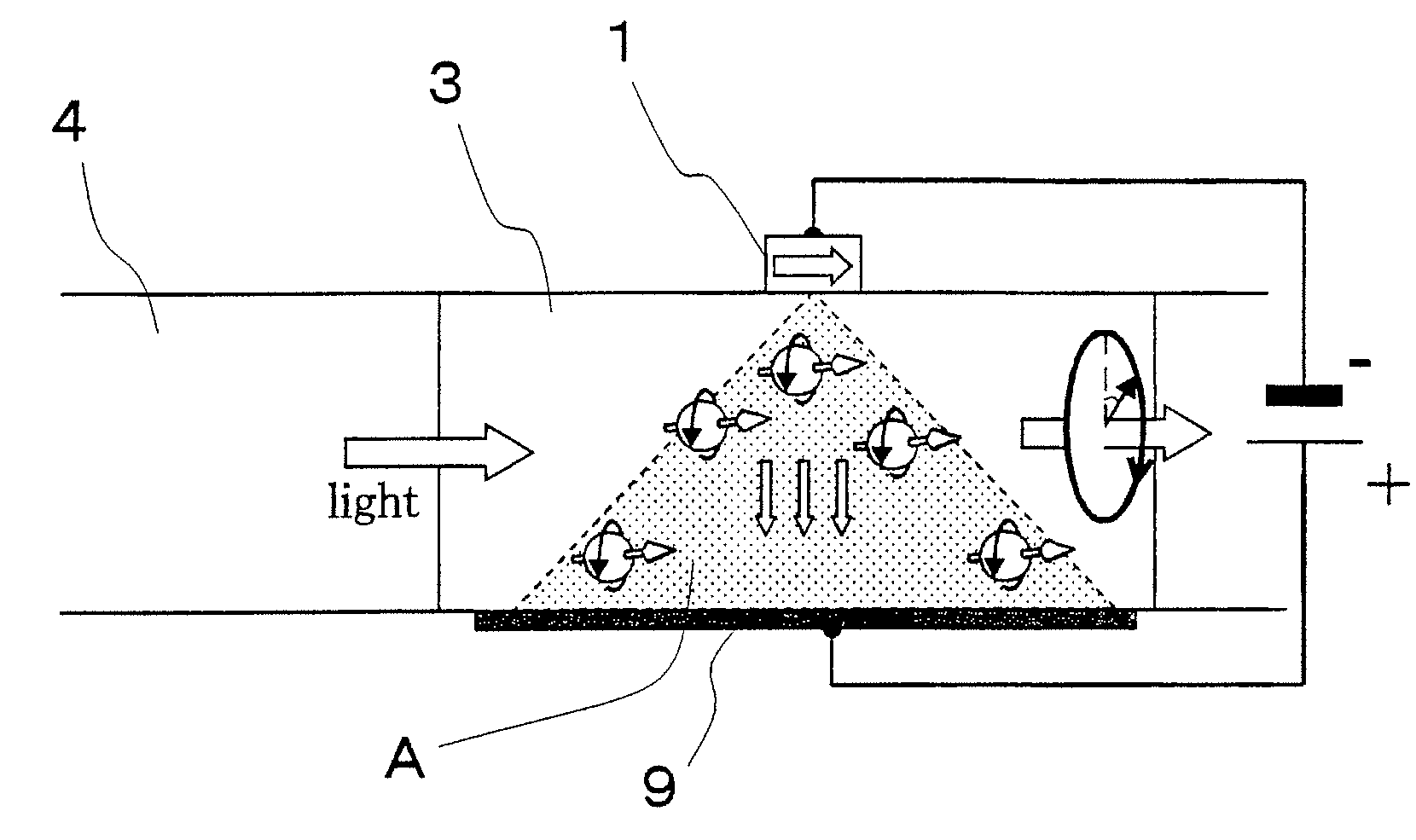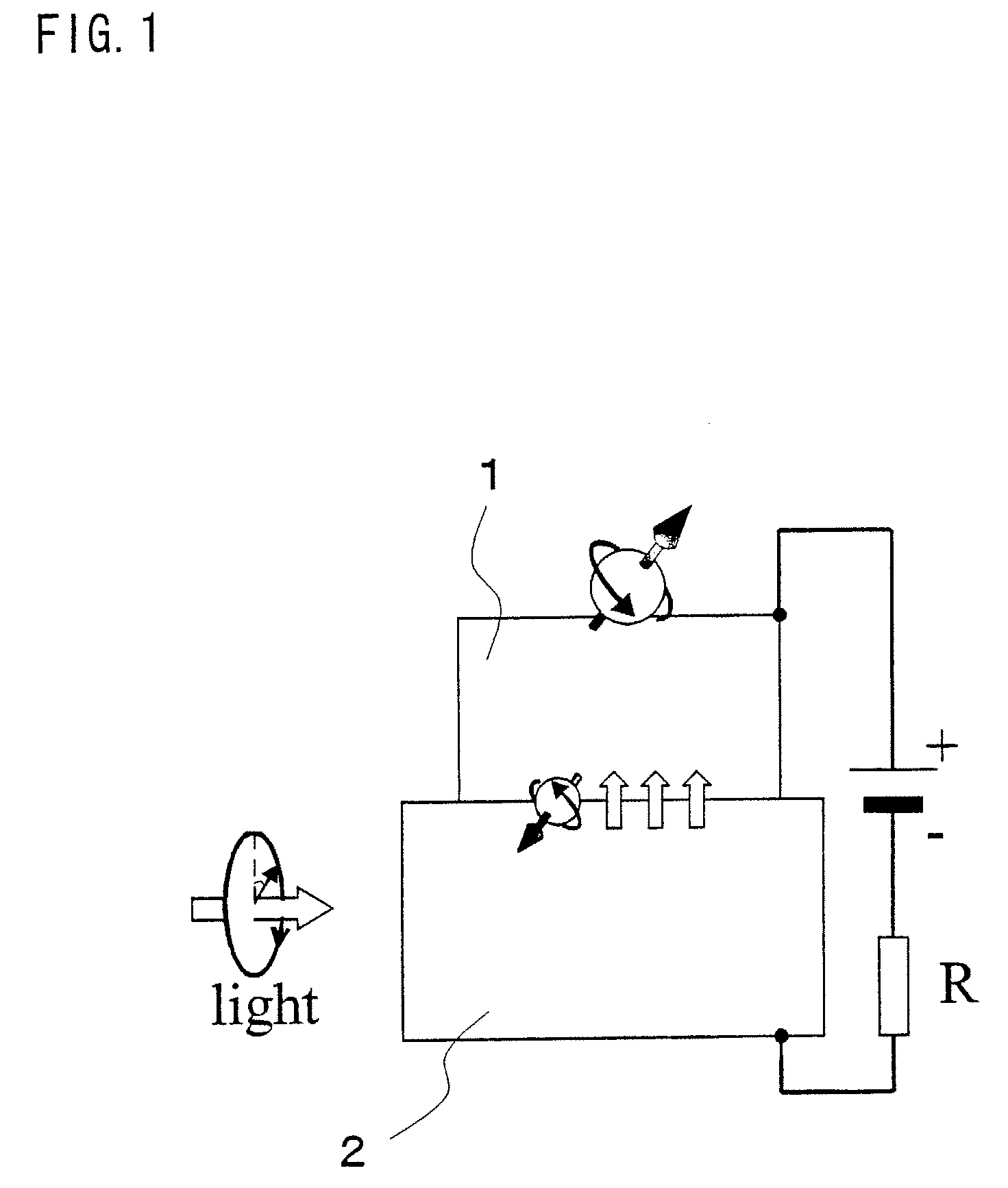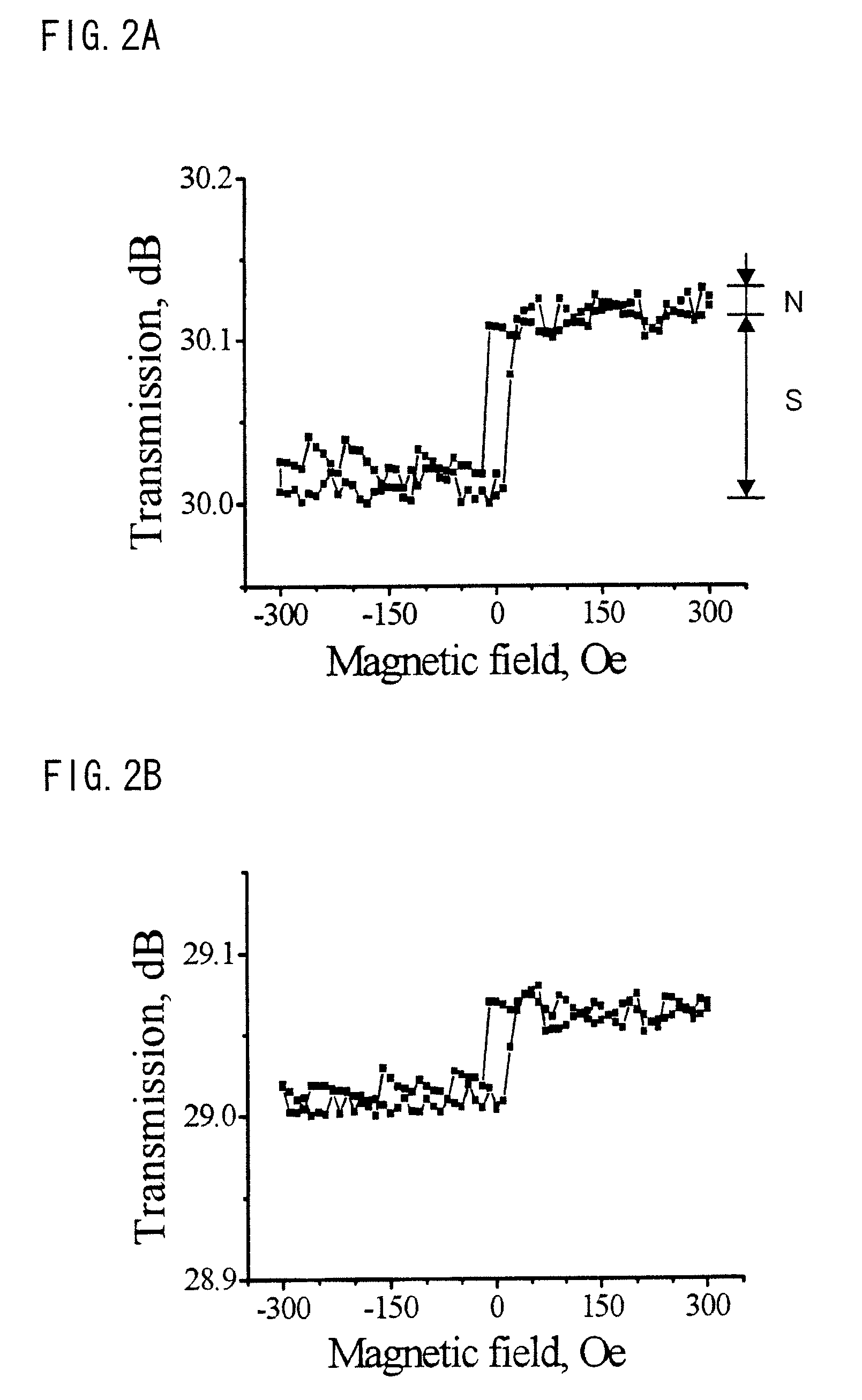Nonvolatile optical memory element, memory device, and reading method thereof
a memory element and non-volatile technology, applied in the direction of information storage, static storage, digital storage, etc., can solve the problems of limiting the speed of data processing by opto-electronic conversion, the operation speed of these devices is the electron intersubband lifetime, and the operation speed of these devices is rather long in a semiconductor, so as to achieve a widening a significant expansion of the effective magneto-optical region
- Summary
- Abstract
- Description
- Claims
- Application Information
AI Technical Summary
Benefits of technology
Problems solved by technology
Method used
Image
Examples
example 1
[0076]FIG. 7 shows a structural example of the nonvolatile optical memory element used in the first and second embodiments. A spin-photon memory in Example 1 includes a substrate 46, an optical waveguide buffer layer 45, a waveguide core layer 44, a p-i-n semiconductor detector 43, which functions as a semiconductor optical amplifier, a buffer layer 42, and a nanomagnet 41. These members are stacked in this order. The substrate 46 is made of a p-type GaAs 38, and on one side of the substrate 46 is disposed a Cr / Au electrode 39. On another side of the substrate 46 which is opposite to the side of the substrate 46 on which the electrode 39 is disposed, the optical waveguide buffer layer 45 made of a p-type Al0.5Ga0.5As 37 and the optical waveguide core layer 44 made of a p-type Al0.3Ga0.7As 36 are provided. The p-i-n semiconductor detector 43, which functions as a semiconductor optical amplifier, is constituted by a p-type GaAs 35, an i-type GaAs 34, and an n-type GaAs 33. The nanomag...
example 2
[0078]Example 2 is a structural example in which a photodetector, which functions as an optical amplifier, is disposed on an optical waveguide. FIG. 8 shows the structure. An optical waveguide structure is constituted by a p-type GaAs 58, a p-type Al0.5Ga0.5As 57, and a p-type Al0.3Ga0.7As optical waveguide core 56. On one side of the optical waveguide structure is provided an electrode 59 made of Cr / Au. On another side of the optical waveguide structure are provided a p-type GaAs 55, an i-type GaAs 54, and an n-type GaAs 53, which are sequentially provided on the optical waveguide core, so as to constitute a p-i-n semiconductor detector, which functions as an optical amplifier. A buffer layer made of an nn-type GaAs 52 is provided on a top of the p-i-n semiconductor detector, and a Fe layer 51 is provided on a top of the nn-type GaAs 52. A voltage source is connected between the Fe layer 51, which serves as a nanomagnet, and the electrode 59. As shown in FIG. 8, when light is incid...
example 3
[0081]Example 3 is a structural example of an optical waveguide into which a photodetector, which functions as an optical amplifier, is embedded. FIG. 9 shows the structure. An optical waveguide structure is constituted by a p-type GaAs 68, a p-type Al0.5Ga0.5As 67, and an i-type Al0.3Ga0.7As optical waveguide core 66. On one side of the optical waveguide structure is provided an electrode 69 made of Cr / Au. On another side of the optical waveguide structure, a groove is formed from a top surface of the optical waveguide core so that a p-type GaAs 65, an i-type GaAs 64, and an n-type GaAs 63 are sequentially provided in the groove, so as to constitute a p-i-n semiconductor detector, which functions as an optical amplifier. A buffer layer made of an nn-type GaAs 62 is provided on a top of the p-i-n semiconductor detector, and a Fe layer 61 is provided on a top of the nn-type GaAs 62. A voltage source is connected between the Fe layer 61, which serves as a nanomagnet, and the electrode...
PUM
 Login to View More
Login to View More Abstract
Description
Claims
Application Information
 Login to View More
Login to View More - R&D
- Intellectual Property
- Life Sciences
- Materials
- Tech Scout
- Unparalleled Data Quality
- Higher Quality Content
- 60% Fewer Hallucinations
Browse by: Latest US Patents, China's latest patents, Technical Efficacy Thesaurus, Application Domain, Technology Topic, Popular Technical Reports.
© 2025 PatSnap. All rights reserved.Legal|Privacy policy|Modern Slavery Act Transparency Statement|Sitemap|About US| Contact US: help@patsnap.com



